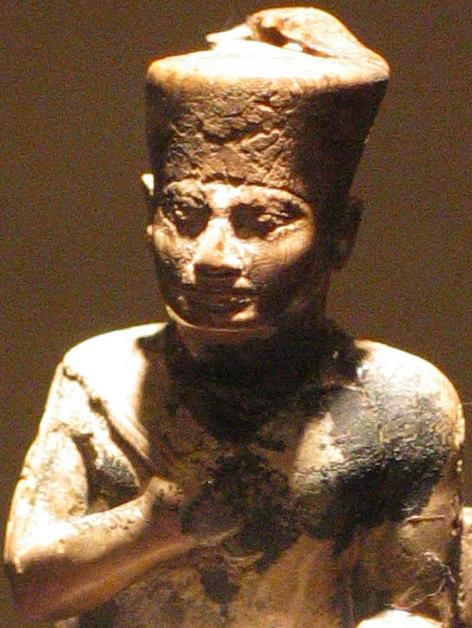Researchers were puzzled when they found a headless ancient Egyptian statue made of bronze. Recently, they solved the puzzle of its identity using advanced technologies.

The headless statue is said to belong to Imhotep. Photo: Getty
The Saqqara Cemetery has amazed researchers, Egyptologists and archaeologists for many years. Located about 32km south of Cairo, on the west bank of the Nile River, it is an archaeological goldmine. Once serving as the largest cemetery for the ancient Egyptian capital of Memphis, Saqqara has a number of pyramids towering over the surrounding desert, the most prominent of which is the Step Pyramid (Pyramid of Djoser) ) famous, built in the 27th Century BC.
Mohammad Youssef, an archaeologist and Director of the Saqqara Antiquities Area of Egypt’s Supreme Council of Antiquities, dug deep below the ground near the Step Pyramid.
In the 2021 Smithsonian Channel documentary, ‘Tomb Hunters’, he and his research team mentioned the discovery of a headless statue. Speaking on the show, Mr. Youssef said: “I think this statue has the shape of a letter writer sitting on a chair and holding a papyrus scroll in both hands. But unfortunately, it has lost its head.”
The bronze statue was discovered near the tomb of a high-ranking ancient official named Pinomis. The statue is surprising in that bronze is a traditional metal reserved only for gods and kings.
According to the documentary’s narrator, further analysis has proven that this is no ordinary statue. They explain: “Using computer modeling, we have made some interesting discoveries. This is a statue of a very important person in the ancient world, who can now be found in museums. worldwide, the inventor of the pyramid – Imhotep”.

Considered by many to be the greatest architect in Egyptian history, Imhotep created the unique design for pharaoh Djoser’s tomb, the first known monumental stone building on Earth – the Pyramid stairs – and also the first architect we know the name.
He altered the one-story tomb, known as the mastaba, by enlarging it and then adding five more floors. As a result, one of the most iconic monuments in Egypt emerged.
Dr. Bob Bianchi, an Egyptologist, told the documentary: “The Step Pyramid of Saqqara is an amazing wonder. This is the first monument made entirely of stone.”
Bob’s colleague Aliaa Ismail added: “This pyramid still exists today. Besides, it is also the premise for the construction of the Great Pyramid at Giza.”

About 60 meters high, the Step Pyramid contains a labyrinth of tunnels with a length of about 6km. Inside the pyramid is the burial place of the king and members of his family, as well as for storing goods and offerings. All tunnels connect to a central shaft measuring 7 square meters and 28 meters deep.
The documentary’s narrator explains that the Step Pyramid marked a “turning point” in Egypt’s history: “It heralded the beginning of a glorious new era that lasted 450 years and created the world in which Pinomis lived. This is considered one of the most stable, rich and innovative times in ancient history.”
Source: danviet.vn








